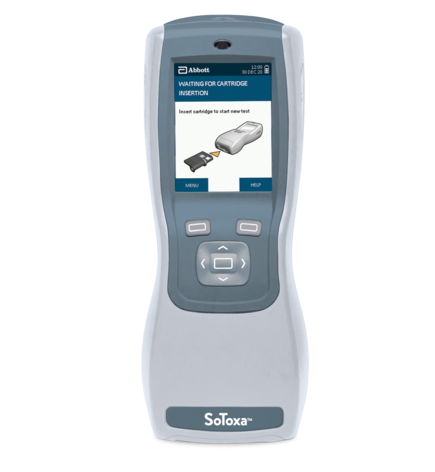
Police Across Region Using New Drugged Driving Tests
More police across Lake County will soon have a new way to identify and keep drug-impaired drivers off the road. Announced today, the Indiana Criminal Justice Institute is distributing 97 SoToxa Mobile Test System units to 19 agencies in the region, as part of the state’s ongoing efforts to reduce drugged driving and traffic fatalities.
SoToxa, developed by Abbott, is a handheld analyzer that tests oral fluid for the presence of six types of drugs: cocaine, methamphetamine, opiates, cannabis (THC), amphetamine and benzodiazepines. The test is conducted roadside by obtaining a mouth swab from suspected impaired drivers.
Driving under the influence of any substance, whether legal or illegal, is against the law in all 50 states.
“We’re concentrating our efforts in Lake County as a thoroughfare between Illinois and Michigan where cannabis is legal,” said Devon McDonald, ICJI Executive Director. “This is about making sure officers in the region have the training and equipment they need to address drug-impaired driving swiftly and more effectively.”
Today’s announcement is the latest development in the state’s roadside oral fluid program, launched by the criminal justice institute last December. To date, there are 87 SoToxa devices in use in Indiana with 798 tests being administered by law enforcement. Of those, 443 or 55 percent have resulted in a positive test for one or more substance. Cannabis was the leading drug category with 260 positive tests – 43 percent of those appearing with at least one other drug.
The program was created as part of the “Great Lakes, High Stakes” campaign, in partnership with the National Highway Traffic Safety Administration’s Region 5 Office, to address the emergence of drugged driving taking place regionally and nationwide.
According to NHTSA, in the 10 years between 2009 and 2018, the presence of marijuana had nearly doubled among drivers killed in crashes who were tested for the substance. More recently, data from a 2021 NHTSA study shows that 56 percent of drivers involved in serious injury and fatal crashes tested positive for at least one drug, based on trauma centers studied last year.
In response, officers will begin using the devices in the field starting this month, bringing the new statewide total to just under 200.
Hobart Police Department Lieutenant Ronald Russo is receiving eight of those units and said this technology creates a deterrent and will ultimately lead to safer roads.
“These devices are redefining roadside investigations and will make us more efficient,” Russo said. “The faster we’re able to identify and remove impaired drivers and deter this behavior, the more lives we can save. It’s a game-changer.”
In Indiana, officers must have a reason to pull over the vehicle first before administering the test, whether it’s for driving erratically, speeding or another infraction. If the officer suspects impairment, they will use standard detection techniques such as field sobriety tests and portable breathalyzers to evaluate the driver.
In situations where drugs may be suspected, they can then ask the driver to take the SoToxa test. This is done by collecting an oral fluid sample, which is then inserted into the handheld analyzer. Results are available roadside within five minutes and indicate positive or negative for each of the six drug categories.
“Officers use a combination of training, technology and experience to detect signs of impairment,” said Robert Duckworth, ICJI Traffic Safety Division Director. “SoToxa would not replace those techniques. It’s just an additional tool they can use to keep dangerous drivers off the road.”
In Indiana, drivers can refuse the test, and the results cannot be used as evidence in court to determine if the driver was impaired. The purpose of the device, similar to portable breath tests, is to further establish probable cause, which can then be used by the officer to make an arrest, administer a certified breath test, take the suspect for medical treatment or apply for a warrant to administer a blood draw.
“Most officers today are equipped with portable breathalyzers to screen for alcohol, but detecting the presence of drugs roadside poses more of a challenge,” Duckworth said. “As challenges evolve, we have to adapt. We’re proud to be one of the first states in the nation to adopt this technology and provide a statewide program.”
The units cost roughly $4,500 each, are reusable and were paid for with federal NHTSA funds.
